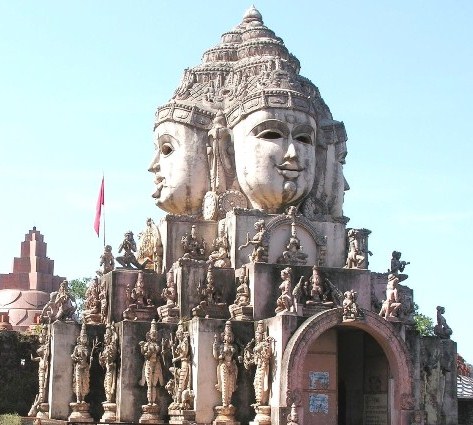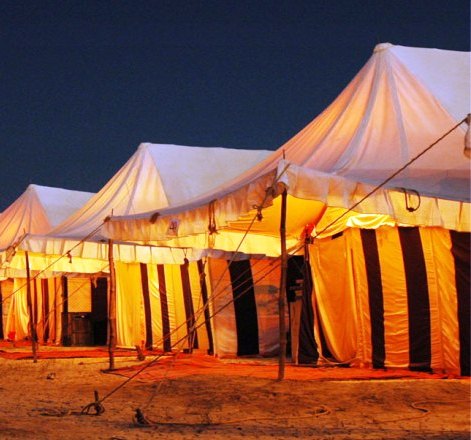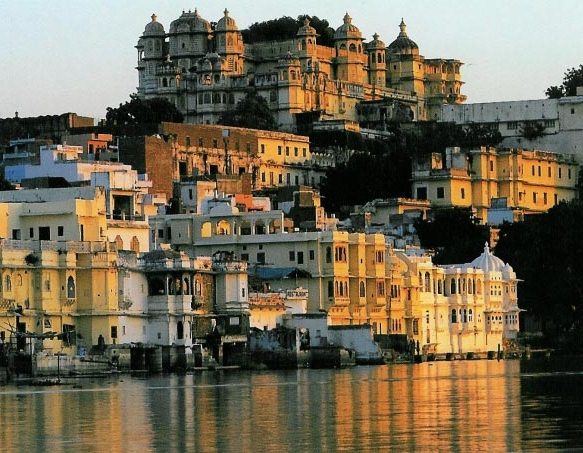
- Helplines:
- + 91-83-5599-2000 |
- 83-5599-3000 |
- Mail:
- travel@pthmail.com
| Gwalior Fort |
|---|
| Fort is built on a steep mass of Sandstone. It was made somewhere at the end of 14th or beginning of 15th century. The Gwalior Fort spreads out over an area of 3 square km, bounded by solid walls of sandstone, which enclose three temples, six palaces and a number of water tanks. The Mughal emperor Babar referred to the Gwalior Fort as "the pearl amongst fortresses in India." |
| Manmandir Palace |
|---|
| Built between 1486 and 1517 by Raja Mansingh Tomar. Emperor Aurangzeb imprisoned & executed his brother Murad here |
| Gujari Mahal |
|---|
| It is a monument of love of Raja Mansingh Tomar for his Gujar Queen, Mrignayani (Ninni). It was built in 15th century. |
| Sas - Bahu Temples |
|---|
| The Sas-Bahu temples, in another part of the fort, are not dedicated to a mother-in-law (Sas) and daughter-in-law (Bahu) as is sometimes supposed. Sas-Bahu is the name traditionally given to two adjoining temples of different sizes. |
| Suraj Kund |
|---|
| Built in the 15th century, references to the Suraj Kund complex can be traced as far back as AD 425. Suraj Kund existed much before the city of Gwalior and is considered the place where Sage Gwalipa cured Suraj Sen of leprosy from the waters of this pond. |
| Tomb of Mohmmad Ghaus |
|---|
| At another point in the city is the tomb of Mohammad Ghaus, a saint of the Islamic faith of the 16th century. The stone carving for which the skilled artisans of Gwalior were justly famous is apparent in the huge panels of lacy screen work, which combine with an interesting architectural design to create a delicate, ethereal appeal. |
| Teli Ka Mandir |
|---|
| Contrasting with the predominant North Indian style of architecture is the Teli-ka-Mandir. This temple, built in the ninth century and Dravidian in form, is believed to be the oldest in the fort. The sculptures are distinctly North Indian. A more recent study ascribes it to Telap Raj, a prime minister of the region. Dedicated to Lord Vishnu, a garuda (mythical bird) can be seen on top of the 10-metre-high doorway. |
| Jay Vilas Palace |
|---|
| It is a current residence of the Scindia family. Some 25 rooms have been turned into the Jivaji Rao Scindia Museum, and in these rooms so evocative of a regal lifestyle, the past comes alive. Jai Vilas is an Italianate structure which combines the Tuscan and Corinthian architectural modes. Timings: 10.00 AM to 5:00 PM: Wednsday Closed |
| Padavali & Baleshwar |
|---|
| Padavali is famous for the magnificent temple built on the fortress of Padavali. The temple displays classic architecture, which can be equated with any of the famous temples. The Bateshwar valley is famous for the numerous temples, most of which are in a ruined condition. The popular belief is that the statues found here are the creations of the Mother Nature. |
| Shivpuri (Approx 112 Kms from Gwalior) |
|---|
| This quaint little town used to be the summer capital of the Scindia rulers of Gwalior. A natural choice obviously, with its luxuriant forests and hilly environs. There is a National Park here, the Madhav National Park, which not only provides sanctuary to the wildlife but to the avifauna as well. There are beautiful carved cenotaphs erected in memorium by the Scindia rulers. |
| Datia (Approx 69 Kms from Gwalior) |
|---|
| Known in Mahabharata as Daityavakra, Daita is known for its seven-storied palace of Raja Bir Singh Deo. This structure is a unique example of 17th century architecture. And if you happen to be a temple freak, do visit the Gopeshwar temple. |
| Orchha (Approx 69 Kms from Gwalior) |
|---|
| Lying on the road to Khajuraho, Orchha is famous for its palaces and temples built in the 17th and 18th centuries. Once the capital of the Bundela Rajputs, later under Mughal rule, some of its palaces contain murals of the Bundela school. Particularly worth visiting are the Jehangir Mal, built to commemorate Emperor Jehangir's visit in the 17th century; the Chaturbhuj Mandir and the Lax Mandir. |

06 Nights / 07 Days

17 Nights / 18 Days

02 Nights / 03 Days

03 Nights / 04 Days

03 Nights / 04 Days

04 Nights / 05 Days

05 Nights / 06 Days

06 Nights / 07 Days

06 Nights / 07 Days

07 Nights / 08 Days

07 Nights / 08 Days

07 Nights / 08 Days

07 Nights / 08 Days

15 Nights / 16 Days






.png)